The fashion industry's rapid pace and ever-changing trends contribute to a staggering amount of textile waste, much of which finds its final resting place in landfills. The impact of textiles ending up in landfills is a multi-faceted issue that extends beyond the visible heaps of discarded clothing. In this comprehensive exploration, we will delve into the environmental, social, and economic repercussions of this textile waste crisis, shedding light on the urgent need for sustainable solutions.
The Growing Mountain of Textile Waste
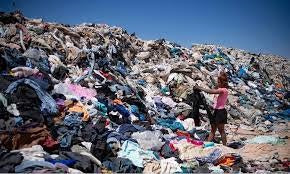
The Fast Fashion Conundrum
The rise of fast fashion has transformed the way we consume clothing. With an emphasis on quick turnover and inexpensive garments, the fashion industry encourages a culture of disposability. As a result, consumers are discarding clothing at an unprecedented rate, contributing to the growing mountain of textile waste.
The Lifecycle of Textiles
Understanding the lifecycle of textiles is essential to grasp the implications of their disposal. From the cultivation of raw materials to manufacturing, distribution, retail, and eventual consumer use, textiles undergo a complex journey. However, the end of this lifecycle, marked by disposal in landfills, often receives insufficient attention, despite its profound consequences.
The Environmental Impact
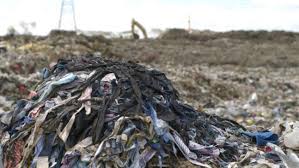
Landfill Overflow and Limited Space
Textiles make up a significant portion of municipal solid waste in landfills. The sheer volume of clothing and fabrics that end up in landfills contributes to overflowing waste sites. This not only poses logistical challenges for waste management but also exacerbates the strain on limited landfill space, leading to increased environmental degradation.
Slow Decomposition of Synthetic Fabrics
Many modern textiles, especially those derived from synthetic materials like polyester and nylon, are non-biodegradable. In landfills, these materials can persist for decades or even centuries, releasing harmful chemicals and microplastics into the soil. The slow decomposition of synthetic fabrics further amplifies the environmental impact, as these materials linger long after their useful life.
Toxic Emissions and Soil Contamination
As textiles break down in landfills, they release toxic substances into the air and soil. The decomposition process of certain fabrics, such as those treated with chemical dyes and finishes, can generate harmful emissions. Additionally, the leaching of chemicals from textiles into the soil poses risks to nearby ecosystems and, potentially, water sources, contributing to soil contamination.
Methane Production from Decomposition
The decomposition of organic materials in landfills, including natural fibers like cotton, generates methane, a potent greenhouse gas. While methane capture technologies exist in some landfills, the incomplete decomposition of textiles contributes to the release of this harmful gas into the atmosphere, contributing to climate change.
Social and Economic Implications
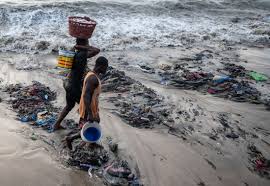
Global Textile Waste Trade
The global textile waste trade is a complex system that often involves the export of discarded clothing to developing countries. While this trade provides clothing to those in need, it can also perpetuate a cycle of dependency and hinder local textile industries. Moreover, the influx of low-quality garments can undermine the economic viability of local markets, exacerbating poverty in some regions.
Loss of Economic Value and Resources
When textiles end up in landfills, valuable resources go to waste. The energy, water, and raw materials invested in the production of clothing are lost, contributing to a cycle of resource depletion. Extending the lifespan of textiles through recycling and reusing is not only environmentally responsible but also preserves the economic value embedded in these materials.
Social Inequities in Waste Management
The disposal of textiles disproportionately affects marginalized communities living in close proximity to landfills. These communities often bear the brunt of environmental hazards, such as air and water pollution, associated with textile waste. Addressing these social inequities requires a holistic approach that considers both environmental justice and sustainable waste management practices.
Sustainable Solutions and Innovations
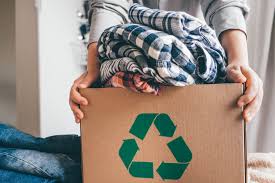
Promoting Circular Fashion Economy
The shift towards a circular fashion economy is crucial for mitigating the impact of textiles in landfills. This approach emphasizes the continual use, recycling, and repurposing of materials to minimize waste. Brands and consumers alike play a pivotal role in promoting circular fashion by supporting sustainable practices, such as clothing rental, resale, and upcycling.
Textile Recycling Initiatives
Textile recycling initiatives are gaining traction as a viable solution to reduce the environmental impact of clothing disposal. Innovative technologies are emerging to break down fabrics into their raw components, which can be used to create new textiles. Educating consumers about the importance of recycling textiles and creating accessible collection points contribute to the success of such initiatives.
Biodegradable Fabrics and Sustainable Materials
The development and adoption of biodegradable fabrics offer a promising avenue for reducing the persistence of textiles in landfills. Manufacturers are exploring plant-based materials, such as organic cotton, hemp, and bamboo, which decompose naturally. Additionally, research into biodegradable synthetic alternatives aims to provide eco-friendly options without sacrificing performance and durability.
Consumer Education and Conscious Choices
Empowering consumers with knowledge about the environmental impact of textile waste is instrumental in driving change. Sustainable fashion education can encourage conscious consumer choices, promoting responsible consumption habits, and fostering a culture of mindful wardrobe management.
The Role of Legislation and Industry Standards

Waste Reduction Policies
Government initiatives and waste reduction policies play a crucial role in addressing the textile waste crisis. Implementing and enforcing regulations that encourage responsible disposal, recycling, and sustainable manufacturing practices are essential for shaping a more environmentally friendly and socially equitable textile industry.
Extended Producer Responsibility (EPR)
Extended Producer Responsibility (EPR) frameworks hold manufacturers accountable for the entire lifecycle of their products. In the context of textiles, EPR could incentivize brands to design products with recycling and end-of-life considerations, fostering a more sustainable approach to production and waste management.
Certifications and Standards
Certifications and standards, such as the Global Recycling Standard (GRS) and the Global Organic Textile Standard (GOTS), provide consumers with assurances about the environmental and ethical practices of textile products. Supporting brands that adhere to these certifications contributes to the demand for sustainable and responsibly produced textiles.
Encouraging Mindful Consumption Habits
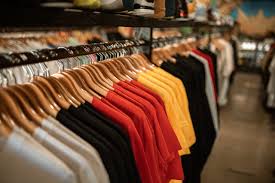
Quality Over Quantity
Encouraging consumers to prioritize quality over quantity is a fundamental step in combating textile waste. Investing in well-made, durable garments may initially cost more, but the long-term benefits include reduced waste, lower resource consumption, and a more sustainable wardrobe.
Clothing Swaps and Secondhand Shopping
Participating in clothing swaps and embracing secondhand shopping are effective ways to extend the life of textiles. By giving pre-loved items a new home, consumers contribute to a circular fashion economy and reduce the demand for new production, thereby mitigating the environmental impact of textile waste.
Repair and Upcycling
Promoting repair and upcycling initiatives encourages consumers to breathe new life into worn or damaged garments. Learning basic mending skills or supporting local businesses that offer repair services helps reduce the frequency of clothing disposal, fostering a more sustainable and resource-efficient approach to fashion.
The impact of textiles ending up in landfills is a critical issue that demands urgent attention and concerted efforts from consumers, industry stakeholders, and policymakers alike. From the environmental degradation caused by non-biodegradable synthetics to the social and economic inequities associated with textile waste, the consequences are far-reaching and multifaceted.
Embracing sustainable solutions, such as circular fashion practices, textile recycling initiatives, and the development of biodegradable fabrics, is essential for mitigating the impact of textiles in landfills. Legislation, industry standards, and consumer education play pivotal roles in shaping a more responsible and ethical textile industry.
As we navigate the complex web of challenges posed by textile waste, the journey towards a more sustainable future requires collaboration, innovation, and a collective commitment to mindful consumption habits. By reimagining our relationship with clothing, embracing circular fashion principles, and advocating for positive change, we can unravel the impact of textiles in landfills and weave a more sustainable narrative for the fashion industry.
